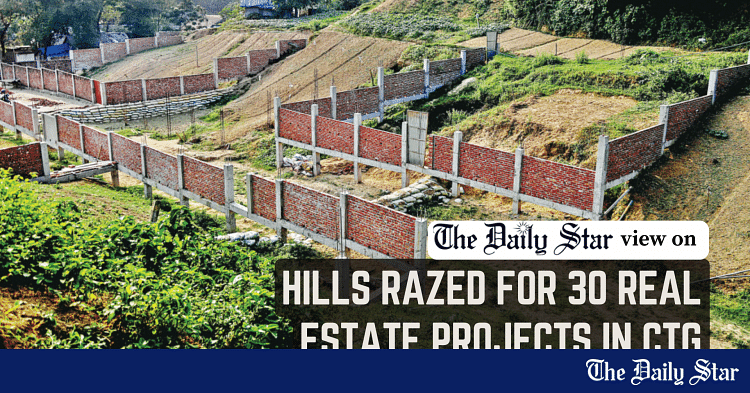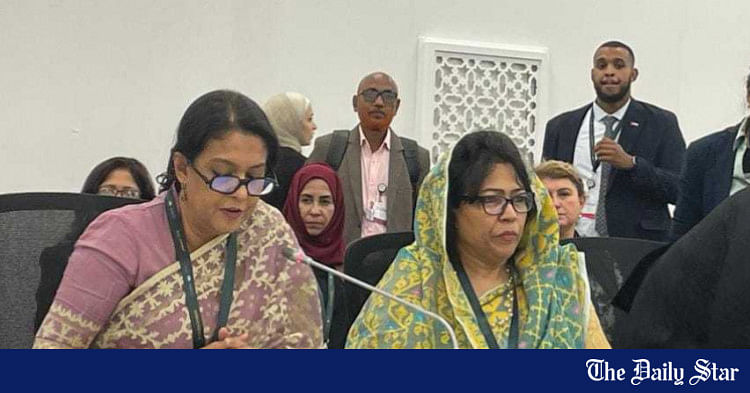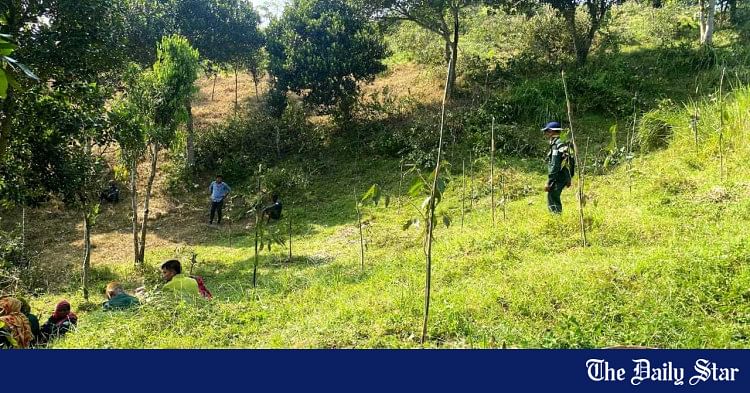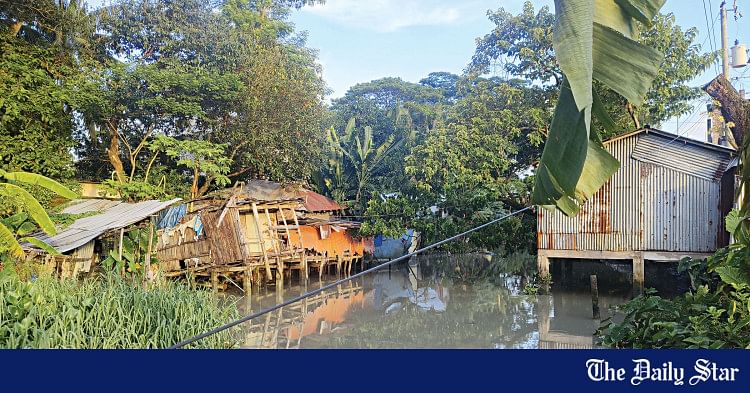Saif
Senior Member
- Jan 24, 2024
- 12,725
- 7,062
- Origin

- Residence

- Axis Group

- Copy to clipboard
- Thread starter
- #229

Save Chattogram hills from destruction
Reports indicate widespread damage over the decades
Save Chattogram hills from destruction
Reports indicate widespread damage over the decades

VISUAL: STAR
We are concerned about the ongoing trend of hill cutting in Chattogram which has persisted despite the political changeover in the country. Recent findings in this regard paint a troubling picture—with one report saying that the port city has lost 120 hills over the last four decades. Another report claims that only about 80 of the 200 hills the city once had remain, with at least 30 real estate projects having contributed to hill flattening over the last five decades. While data on hills can be sketchy at times, available studies clearly indicate widespread destruction in the name of constructing residential colonies, commercial ventures, and road infrastructure, largely due to poor oversight by the authorities.
During a recent visit to Chattogram, a correspondent for this daily documented the extent of damage in areas such as Khulshi, Akbar Shah, and Bayezid Bostami, where hills were levelled for multiple housing projects. Locals revealed that plot owners often erect walls first to dodge scrutiny. Although Department of Environment (DoE) officials claim to take action after receiving complaints—including filing 34 cases against violators in the past two years—the scale of destruction suggests that such actions are neither sufficient nor timely enough to deter further violations. Developers continue to operate with impunity, exploiting legal loopholes and weak enforcement of environmental laws. As a result, the city's hills and green spaces have diminished sharply, while landslide and waterlogging risks have escalated.
Under the Environment Conservation Act 1995, razing hills without permission from the DoE is a punishable offence. Permission should also be obtained from the Chattogram Development Authority (CDA). Authorisation or lack thereof is not the only issue here, however. According to a CDA official cited by Desh Rupantor, while there is no outright prohibition on building in hilly areas, construction requires caution due to the region's topography. The hills in Chattogram are primarily composed of sandy soil, which is prone to erosion, especially during heavy rainfall. This geological feature makes the hills particularly vulnerable to destruction when cut or disturbed.
Clearly, there must be stricter and more specific guidelines for construction in these hilly areas, and they must be effectively enforced. Over the years, enforcement has been hindered by corruption and political influences, issues that should be easier to address under the interim administration. Experts warn that if the current trend of hill cutting continues, Chattogram's remaining hills could be halved by 2035. The authorities, therefore, must take stronger measures to prevent further damage. Otherwise, the region's ecological balance will be irreparably harmed, increasing the frequency and severity of landslides and flooding.
Reports indicate widespread damage over the decades
VISUAL: STAR
We are concerned about the ongoing trend of hill cutting in Chattogram which has persisted despite the political changeover in the country. Recent findings in this regard paint a troubling picture—with one report saying that the port city has lost 120 hills over the last four decades. Another report claims that only about 80 of the 200 hills the city once had remain, with at least 30 real estate projects having contributed to hill flattening over the last five decades. While data on hills can be sketchy at times, available studies clearly indicate widespread destruction in the name of constructing residential colonies, commercial ventures, and road infrastructure, largely due to poor oversight by the authorities.
During a recent visit to Chattogram, a correspondent for this daily documented the extent of damage in areas such as Khulshi, Akbar Shah, and Bayezid Bostami, where hills were levelled for multiple housing projects. Locals revealed that plot owners often erect walls first to dodge scrutiny. Although Department of Environment (DoE) officials claim to take action after receiving complaints—including filing 34 cases against violators in the past two years—the scale of destruction suggests that such actions are neither sufficient nor timely enough to deter further violations. Developers continue to operate with impunity, exploiting legal loopholes and weak enforcement of environmental laws. As a result, the city's hills and green spaces have diminished sharply, while landslide and waterlogging risks have escalated.
Under the Environment Conservation Act 1995, razing hills without permission from the DoE is a punishable offence. Permission should also be obtained from the Chattogram Development Authority (CDA). Authorisation or lack thereof is not the only issue here, however. According to a CDA official cited by Desh Rupantor, while there is no outright prohibition on building in hilly areas, construction requires caution due to the region's topography. The hills in Chattogram are primarily composed of sandy soil, which is prone to erosion, especially during heavy rainfall. This geological feature makes the hills particularly vulnerable to destruction when cut or disturbed.
Clearly, there must be stricter and more specific guidelines for construction in these hilly areas, and they must be effectively enforced. Over the years, enforcement has been hindered by corruption and political influences, issues that should be easier to address under the interim administration. Experts warn that if the current trend of hill cutting continues, Chattogram's remaining hills could be halved by 2035. The authorities, therefore, must take stronger measures to prevent further damage. Otherwise, the region's ecological balance will be irreparably harmed, increasing the frequency and severity of landslides and flooding.












